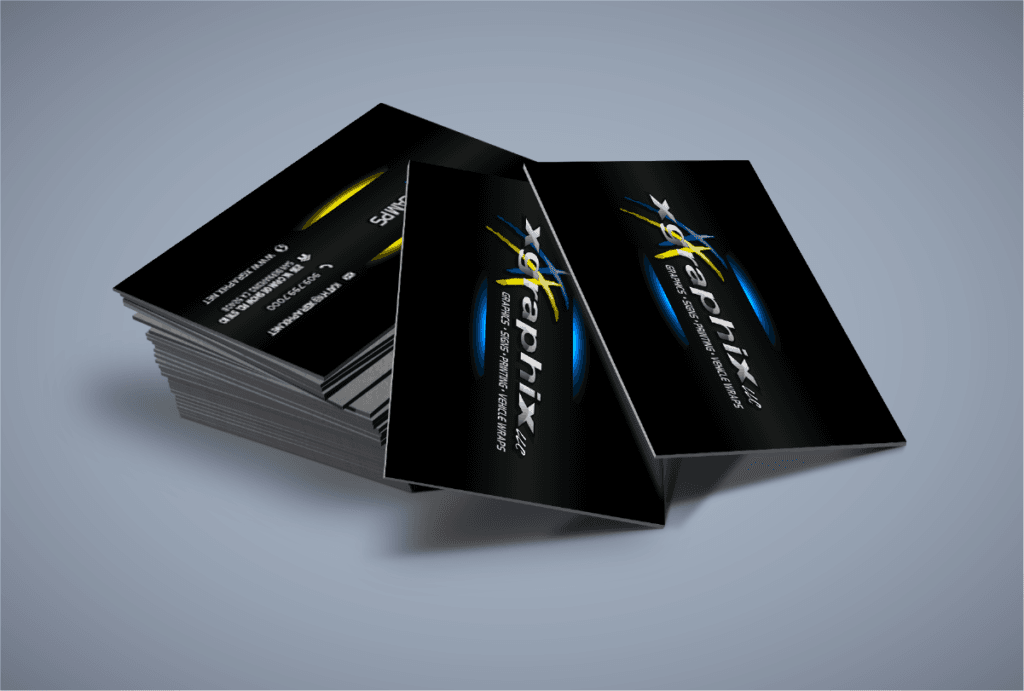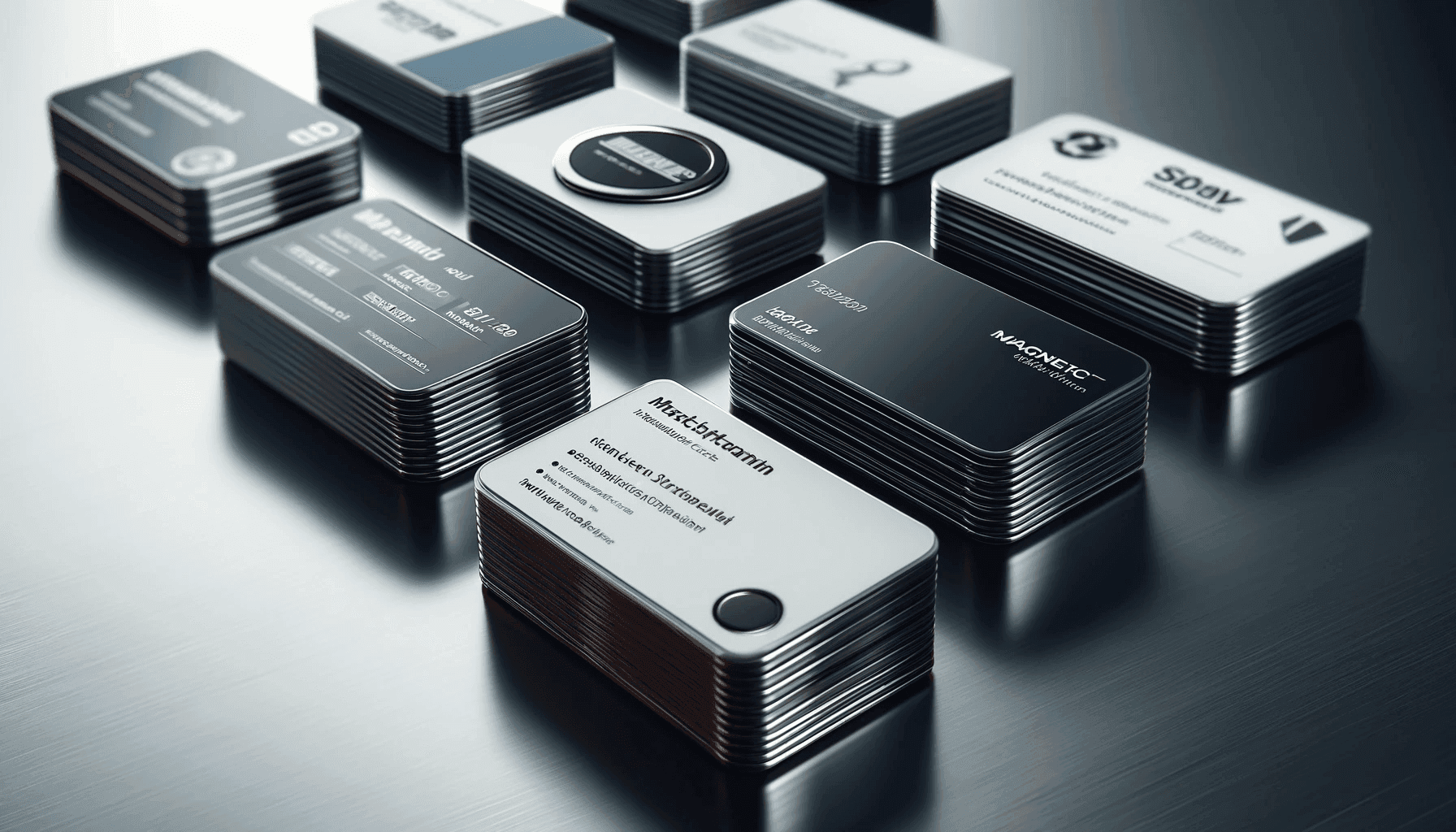Introduction
Imagine yourself at a bustling networking event, confidently handing out your business card to a potential client or collaborator. As they take it, their eyes light up with intrigue – this is no ordinary paper card, but a sleek, magnetic creation that immediately sets you apart from the crowd. The way it effortlessly clings to their metal clipboard or refrigerator speaks volumes about your innovative approach and attention to detail. This is the power of magnetic business cards, a game-changing evolution in the world of professional self-representation.
In a digital age where virtual connections abound, the humble business card remains a crucial tool for making a lasting impression. However, the traditional paper card is now being reinvented, with magnetic variants offering a unique and memorable way to share your contact information. These innovative designs not only captivate the senses but also provide practical benefits that can elevate your personal and professional brand.
Understanding Magnetic Business Cards
Magnetic business cards are a unique take on the classic calling card, featuring a thin, flexible magnetic layer embedded within the material. This allows the card to adhere to any metal surface, from a desk to a refrigerator, making it an eye-catching and highly visible tool for networking and self-promotion.
Compared to their paper counterparts, magnetic business cards offer several distinct advantages. Their magnetic properties ensure that they are less likely to be misplaced or forgotten, as they can be conveniently displayed in prominent locations. Additionally, the tactile experience of handing over a magnetic card can leave a more lasting impression on the recipient, sparking curiosity and fostering a memorable interaction.
Design Aspects of Magnetic Business Cards

The design possibilities for magnetic business cards are vast, allowing businesses and individuals to showcase their creativity and brand identity. From the choice of materials to the incorporation of graphic elements, each design decision can contribute to the overall impact and perceived professionalism of the card.
When it comes to materials, magnetic business cards can be crafted from a variety of options, including vinyl-coated and laminated variants. These materials not only provide a durable and long-lasting solution but also offer a range of finishes, such as matte, glossy, or even metallic, that can elevate the visual appeal of the card.
The graphic design of magnetic business cards is another crucial aspect to consider. Businesses can leverage this canvas to showcase their logo, color scheme, and other branding elements, ensuring a cohesive and professional appearance. Additionally, the incorporation of unique shapes, textures, or even interactive features can make the card stand out and leave a lasting impression on the recipient.
Material Choices and Their Implications
The selection of materials for magnetic business cards can have a significant impact on their overall durability, cost, and aesthetic appeal. Vinyl-coated options, for instance, are known for their resilience and water-resistance, making them a practical choice for everyday use. Laminated magnetic cards, on the other hand, often boast a sleek and polished finish, lending an air of sophistication to the design.
Each material choice comes with its own set of pros and cons, and businesses must carefully weigh these factors to determine the most suitable option for their needs and budget. Factors such as the intended use, the desired level of customization, and the target audience should all be considered when selecting the appropriate magnetic business card material.
Technological Integration in Magnetic Business Cards
The integration of technology into magnetic business cards can further enhance their functionality and user experience. Features such as QR codes and NFC (Near-Field Communication) chips can be seamlessly incorporated, allowing recipients to instantly access digital content or connect with the card owner’s online presence.
By integrating these technological elements, magnetic business cards can become more than just a physical representation of one’s contact information. They can serve as a gateway to a wealth of digital resources, from company websites and social media profiles to multimedia content and interactive experiences. This level of technological integration can not only make the card more engaging but also streamline the process of information exchange and follow-up.
Marketing Advantages of Magnetic Business Cards
Magnetic business cards can be a powerful tool in a company’s marketing arsenal, offering a unique and memorable way to increase brand exposure and recall. Their ability to cling to various surfaces, from office desks to refrigerators, ensures that the card remains in the recipient’s line of sight, constantly reinforcing the brand’s presence.
Moreover, the tactile and interactive nature of magnetic business cards can make them more engaging and memorable than traditional paper cards. This can lead to increased brand recognition and the potential for stronger connections with potential clients or partners. Businesses can further leverage the marketing potential of magnetic cards by incorporating QR codes or other digital elements that direct recipients to their online platforms, fostering deeper engagement and facilitating follow-up interactions.
Case Studies
To illustrate the real-world impact of magnetic business cards, let’s examine a few case studies:
1. **Startup Networking Success**: A tech startup founder attended a high-profile industry event, armed with a batch of sleek, magnetic business cards. By handing these out to potential investors and collaborators, she was able to stand out from the crowd and secure several valuable connections that ultimately led to a successful funding round.
2. **Hospitality Brand Differentiation**: A boutique hotel chain recognized the need to differentiate itself in a crowded market. By designing magnetic business cards that featured the hotel’s unique branding and amenities, the staff was able to leave a lasting impression on guests, leading to increased word-of-mouth referrals and repeat bookings.
3. **Creative Agency Showcase**: A design agency specializing in innovative packaging solutions created magnetic business cards that doubled as miniature product samples. This allowed them to showcase their capabilities while also providing a practical and memorable way for potential clients to keep their contact information close at hand.
These case studies demonstrate the versatility and impact of magnetic business cards, showcasing how they can be leveraged to enhance networking, branding, and customer engagement across various industries.
Creative Uses Beyond Business
While magnetic business cards are primarily used in professional settings, their unique properties have also inspired creative applications beyond the traditional business context. From event passes and membership cards to artistic installations and personal keepsakes, the magnetic nature of these cards has unlocked a world of innovative uses.
For instance, event organizers have utilized magnetic business cards as stylish and functional event passes, allowing attendees to easily display their credentials while also serving as a memorable souvenir. Similarly, organizations have embraced magnetic cards as a way to manage membership and access, seamlessly integrating them into their access control systems.
In the realm of art and design, magnetic business cards have been repurposed as the building blocks for captivating installations, where the cards are arranged in visually striking patterns or used to create interactive sculptures. These creative applications not only showcase the versatility of magnetic cards but also inspire new ways of thinking about the role of physical media in a digital world.
Sustainability and Environmental Impact
As businesses and individuals become increasingly conscious of their environmental footprint, the sustainability of magnetic business cards is an important consideration. While the production of these cards does involve the use of materials like vinyl and metal, there are steps that can be taken to mitigate the environmental impact.
One approach is to explore the use of more eco-friendly materials, such as recycled or biodegradable plastics, in the manufacturing process. Additionally, businesses can opt for magnetic cards that are designed with a focus on longevity, reducing the need for frequent replacements and minimizing waste.
Furthermore, the inherent durability and reusability of magnetic business cards can be seen as an advantage from a sustainability perspective. By reducing the need for frequent reprints and replacements, these cards can contribute to a more sustainable business culture, where physical marketing materials are treated with care and respect.
Future Trends in Business Card Design
As the world continues to evolve, the future of business card design is likely to be shaped by several key trends, including sustainability, digital integration, and personalization.
Sustainability will play an increasingly important role, with businesses and consumers alike demanding more eco-friendly solutions. This may lead to the development of magnetic business cards made from renewable or recycled materials, as well as the incorporation of sustainable production methods.
The integration of digital elements, such as QR codes and NFC chips, will also continue to be a driving force in business card design. As the line between physical and digital media continues to blur, magnetic cards will need to seamlessly bridge the gap, offering a tactile experience while also providing instant access to digital content and resources.
Personalization will also be a key trend, as businesses and individuals seek to create truly unique and memorable cards that reflect their brand identity or personal style. This may involve the use of custom shapes, textures, or even interactive features that make each magnetic business card a one-of-a-kind creation.
Conclusion
In a world where first impressions are paramount, magnetic business cards have emerged as a game-changing innovation that elevates the traditional calling card into a powerful tool for networking, branding, and self-expression. By harnessing the power of magnetism, these cards offer a unique and memorable way to share contact information, showcase creativity, and forge lasting connections.
As we have explored, the design possibilities for magnetic business cards are vast, with a range of materials, finishes, and technological integrations that can be tailored to suit any personal or professional brand. Moreover, the practical benefits of these cards, such as enhanced visibility and retention, can translate into tangible marketing advantages for businesses of all sizes.
Looking to the future, magnetic business cards will continue to evolve, driven by trends in sustainability, digital integration, and personalization. Yet, at their core, they will remain a testament to the enduring value of physical media in a digital age, offering a tactile and engaging way to make a lasting impression and forge meaningful connections.
So, the next time you find yourself at a bustling networking event, consider reaching into your pocket and presenting a sleek, magnetic business card. As it clings to the recipient’s clipboard or refrigerator, you’ll know that you’ve made an impact that will be remembered long after the event has ended.


